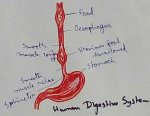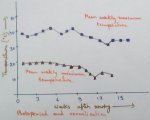Sardar Vallabhbhai Patel
Sardar Vallabhbhai Patel, who is more well-known using his moniker ‘The Iron Man of India’ was born on 31st October, 1875 in Nadiad, Gujarat to a farmer family.
Tale of his immense courage are common folklore in the area he grew up. Fiercely resilient he once branded himself with a hot iron to cure a boil when the quack hesitated on account of his young age.
His humble upbringing notwithstanding, his
fortitude and determination led Patel to study law from England and he returned
to India in 1915. He had a successful law practice and very quickly scaled the
ladder to be one of the leading barristers in the nation.
His heart however rankled under the British servitude and his ideological clashes with the British government continue to simmer. His close association with Gandhi made him throw away his practice and dive headlong into the more pressing issues of his motherland. In 1931, he was elected as the President of the Indian National Congress and was a friends, confidant and trusted aide of Mohandas Karamchand Gandhi. Though he was more actively involved in the politics of Gujarat, he realized very early on that if India were to become a formidable power, unity is of sheer essence.
Post-Independence, the untimely assassination of Gandhi left him rudderless but his steely resolve was nowhere more apparent than when as the Home Minister, he took stern action to consolidate the Indian Union which then comprised of around 550 princely States, many of which were either reluctant or hostile to merge with the Indian Union. Patel and V.P Menon’s efforts, determined approach and frank communication coupled with excellent negotiation skills managed to unify India and when the need arose, Patel did not hesitate to authorize the Police/ Military to compel Hyderabad to merge with the rest of the country into one united whole. Not only did he manage the smooth accession of all these States but also oversaw the transformation of administration in a phased manner which earned him the tag of ‘Unifier of India’
Though personally a devout Hindu, he believed in the essential secular fabric of the nation which was an intrinsic part of its existence and contributed substantially to the implementation of the Constitution, in word and in spirit. The resolute leadership skills displayed by him in the early years of Indian Independence has gone a long way to make the nation strong and formidable.
He is the one who is responsible for establishing unified nationwide systems across the length and breadth of the nation, the fruits of which are reaped by the passing generations, till date. He was frequently referred to as the “patron saint’ of our civil services for this very reason.As the defence Minister of the Nation, post-Independence, he steered the country through one of its most violent and turbulent phases, the Partition. He helped organise relief camps, refugee shelters and set about restoring peace and stability in the traumatized nation.
Such was the legacy of the man that on his 142nd birthday, Prime Minister, Mr Narendra Modi extended him a beaming eulogy saying“We salute Sardar Patel on his Jayanti. His momentous service and monumental contribution to India can never be forgotten.” Not surprising then, that his birthday on 31st October is celebrated as the National Unity Day / Rashtriya Ekta Diwas as a befitting tribute to the legacy of this iconic persona.
From Essay on Sardar Vallabhbhai Patel to HOME PAGE
Recent Articles
-
Eleventh Grade | Eleventh Grade Science | Eleventh Grade Math
Jun 27, 25 12:26 AM
Eleventh grade biology has been designed in accordance with the recommended topics. We will cover all the topics in biology very exciting and interesting way. -
Explain Digestion of Food | Salivary Glands | Oesophagus | Stomach
Jun 27, 25 12:20 AM
Before the digestion is start by the different enzymes secreted from the different digestive glands food must be turned and chut or mixed with saliva inside the mouth. -
Explain Human Digestive System | Mouth | Tongue | Pharynx | Teeth
Jun 21, 25 01:15 PM
Digestive system is a system of alimentary canal and digestive glands. Alimentary canal- alimentary canal is a tube of variable diameter having muscular wall and glandular epithelial tissues which sta… -
Vernalisation in Plants | Definition | Mechanism | Devernalization |
Jun 18, 25 01:34 PM
Definition of vernalisation- The change of flowering habit due to the low temperature treatment is known as vernalisation. This is a physiological process which was denoted by Clipart in 1857 invite b… -
The Food We Eat | Food we Get from Plants and Animals | Carbohydrates
Jun 15, 25 03:20 PM
What are the food that we should eat? Find out the names of ten food items in the word maze. Write the names in the correct column of the table given below. Food we get from plants Food we get from an…




New! Comments
Have your say about what you just read! Leave me a comment in the box below.